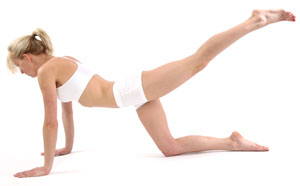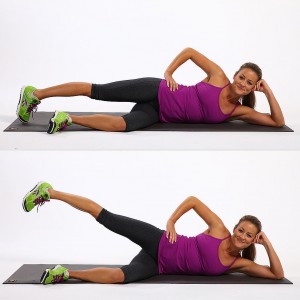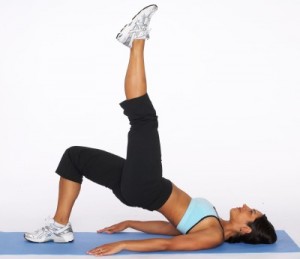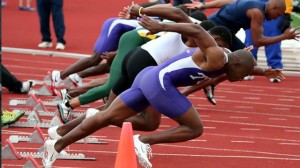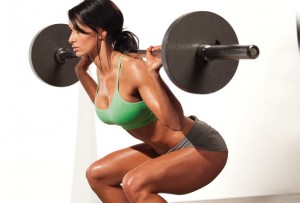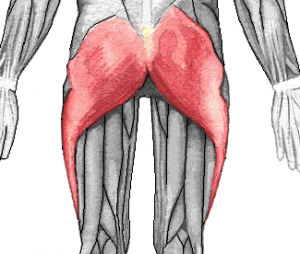 A quick and easy exercise guide on HOW and WHY to work all THREE of your Butt Muscles by Natalia Sikaczowski, SPT.
A quick and easy exercise guide on HOW and WHY to work all THREE of your Butt Muscles by Natalia Sikaczowski, SPT.
Everyone knows the Glutes are the powerhouse of the body. They help us run, jump, sprint, and squat. Butt, what exactly makes up that powerhouse? It is the combined actions of three muscles that make up ‘The Glutes’ and allow for multiplanar motions of the hip and control of the thigh. The obvious gluteus maximus, which usually gets all the applause, is key in extension of the hip, providing stability to the pelvis and, well…just looking good. However, the other two muscles glut medius and minimus also offer a significant contribution during movement, sport, and prevention of injury.
The action of glut med and glut min for the purpose of this article is essentially the same. When the hip is extended, i.e., in standing, both muscles act to bring the leg away from midline; or ‘abduct’ the thigh. They also externally rotate the thigh. When the hip is flexed, i.e., sitting, due to the orientation of the muscle fibers the action of the glut med and min changes to internally rotate the thigh. When we are standing on one leg, i.e., during walking, running, or sprinting, their principle action is to keep the hips level and aligned by not allowing the pelvis to dip down to the opposite side. Maintaining proper muscle activation timing and strength is imperative for correct movement patterns, exercise, and allowing the glut max (and many other muscles) to perform its job by assisting in optimal alignment of the femur and stabilization of the spine.
Weakness of glut max, med, or min will predispose athletes to increased risk of knee, hip, and back injuries as well as delayed neuromuscular response time and abnormal functional movement patterns. A prime example of weakness of these muscles can be seen when one performs a single leg squat. If the thigh begins to bow in and internally rotate, instead of staying in line with the toes, you can bet your bottom dollar max, med, and min are on a coffee break. In fact, most people that already have hip, knee, or back problems also have a weak glut med and min.
So how do we wake these muscles up to get our max potential out of our back side? In a recent article published in the Journal of Orthopaedic and Sports Physical Therapy, eleven common glut exercises were tested to see which ones made the med and min work the hardest. Regardless of whether your goal is to strengthen, sculpt, or rehabilitate, the five exercises below were found to have the strongest contractions in the targeted muscles; giving you the most bang for you booty!
The Top Five for Keeping Glut Med and Glut Min Alive!
#5 – Hip extension on all fours: While on forearms and knees, keeping the knee bent, extend one leg upward so the foot faces the ceiling. *Note: to progress this exercise, straighten and lift the leg that is extending so it is parallel to the floor.
#4 – Side Laying Leg Raise: Lay on one side with the body in a straight line: lift the top leg up, keeping the foot parallel to the ground so that the ankles are roughly 12 inches apart from each other. Make sure not to bring the leg forward or to rotate the hips forward or backward. *Note: to progress, maintain the elevated position and move the leg in 10 clockwise then 10 counterclockwise mini-circles.
#3 – Single Leg Bridge: Lie on your back with one knee bent with the foot flat on the ground with the other leg straight. Lift your buttocks off the ground with the leg that is bent, keep the opposite leg elevated. Return to starting position. *Note: to progress this exercise, add a 5-10 sec hold with each rep. Make sure the hips do not drop to one side.
#2 – The Two Step: Tie a resistance band around ankles. While in a slight squat position take 10 small side steps in one direction, reverse. Keep steps wide enough so the band is tight during the whole exercise. Make sure to lift each foot up off the ground while stepping. Do not let the foot drag. *Note: to progress, lower the body into a deeper squat.
#1 – The CLAM (everyone’s favorite): Lay on your side with your knees slightly bent, keeping your feet together rotate the top leg upward, bringing the knee toward the ceiling. *Note: to progress this exercise, tie a resistance band around the knees.
BOOTY BONUS:
Don’t Forget about Glut Max! Here’s a great challenging exercise to target the terrific trifecta of Glute Max, Med, and Min: Stand on one leg, while bending the knee reach down with the opposite arm towards the ground (stopping about 8 inches from the ground), with the leg on that same side reach back diagonally as far as you can while maintaining balance.
The Short and Sweet of it All:
The glute max, med, and min give huge contribution to our body’s strength, stability, and power both during sport and functional movements of daily life. During these exercise you are strengthening the muscles, but also improving neuromuscular timing and activation yielding better core stability and postural alignment. It is important to combine the above isometric exercises which isolate the glutes into an appropriate training program which also involves functional movement.
Biography: Natalia Sikaczowski is a third year Physical Therapy Student in the Doctoral Program at University of Miami. Prior to PT school Natalia worked as an accomplished personal trainer and group exercise instructor in Chicago, IL. Natalia is particularly interested in developing ‘pre-hab’ programs based on functional movement screens to help athletes prevent injury from occurring due to pre-existing muscular compensation and imbalances. Natalia recently assisted in a research regarding upper extremity injuries in major league baseball pitchers as related to foot arch angles and single leg dynamic balance.
Contact: FunctionalPTTraining@gmail.com
Subscribe to my Blog: FunctionalPTTraining.blogspot.com
Twitter: PrehabPT
